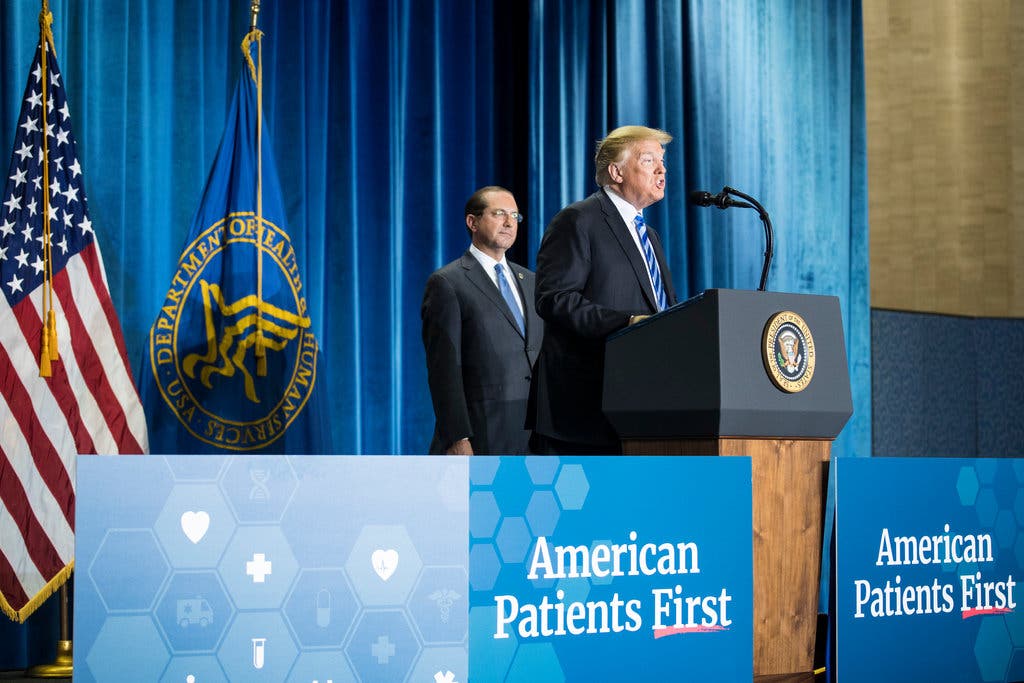Will Trump's Executive Order Lower Drug Costs? An Analysis

Table of Contents
Key Provisions of the Executive Order
Trump's executive order on drug prices aimed to tackle the issue from several angles, focusing on international price negotiations, transparency, and the Medicare Part D rebate system. Let's examine each key provision:
International Price Negotiation
The executive order attempted to leverage lower drug prices in other countries as a benchmark for negotiations in the US. The rationale was that if the government could negotiate prices similar to those in countries with robust drug pricing policies, it could significantly reduce costs for American taxpayers.
- Rationale: This approach aimed to leverage the purchasing power of the US government to achieve better deals, similar to how large private insurers negotiate discounts.
- Challenges: Implementing international price negotiations proved incredibly challenging. Pharmaceutical companies argued that such negotiations would stifle innovation by reducing their profits, potentially leading to fewer new drug developments. Legal challenges also arose, questioning the government's authority to directly negotiate prices.
- Successes/Failures: The executive order's impact on international price negotiations was limited. While some discussions took place, no significant agreements were reached before the order faced legal challenges and was ultimately deemed not fully implemented.
Transparency Requirements for Drug Pricing
Another key provision of the executive order focused on increasing transparency in drug pricing. The idea was that greater transparency would expose unreasonable pricing practices and encourage competition.
- Intended Impact: By making drug pricing data more readily available, the executive order aimed to empower consumers and policymakers to make more informed decisions. It hoped to promote market-based pressures to lower costs.
- Effectiveness: The effectiveness of the transparency measures remains debated. While some data was released, critics argued that it wasn't comprehensive enough to significantly impact pricing behavior.
- Unintended Consequences: Some experts worried that increased transparency might inadvertently reveal competitively sensitive information, potentially harming innovation or leading to consolidation within the pharmaceutical industry.
Reimbursement Models and Rebates
The executive order also sought to reform the Medicare Part D rebate system. The goal was to ensure that seniors received a greater share of the discounts negotiated between drug manufacturers and pharmacy benefit managers (PBMs).
- Goal of Change: The aim was to redirect rebates directly to patients at the point of sale, lowering their out-of-pocket costs.
- Effect on Manufacturers and Patients: This change faced significant pushback from drug manufacturers, who argued it would disrupt the existing system and reduce their revenue. The ultimate effect on patients was limited, as the legal challenges and subsequent changes in administration hindered full implementation.
- Legal Challenges: This aspect of the executive order faced considerable legal challenges, leading to uncertainty and delaying any potential benefits for patients.
Impact on Drug Prices and Patient Access
The actual impact of Trump's executive order on drug prices and patient access is complex and multifaceted. A definitive assessment requires careful analysis of various factors.
Actual Changes in Drug Costs
Assessing whether the executive order led to measurable reductions in prescription drug prices requires a thorough examination of pre- and post-order data.
- Data Analysis: Studies comparing drug price changes before and after the order's implementation show mixed results, with some drugs experiencing minor price reductions while others remained relatively unchanged.
- Drug Class Variations: The impact varied across different drug classes, reflecting the complexities of the pharmaceutical market.
- Reputable Sources: Independent analyses from organizations like the Kaiser Family Foundation offer valuable insights into these complex price dynamics and can provide crucial context.
Effect on Patient Access to Medications
Determining whether the executive order improved or hindered patient access requires considering potential trade-offs between price and access.
- Price vs. Access Trade-offs: Lower drug prices might theoretically improve access, but if manufacturers reduce production or discontinue less profitable drugs due to price controls, access could be negatively affected.
- Impact on Specific Drugs: The availability of some specific medications might have been affected, particularly those with lower profit margins.
- Affordability and Adherence: Any changes in patient affordability and adherence to treatment plans would need to be examined using comprehensive healthcare data and patient surveys.
Legal Challenges and Future of Drug Pricing Reform
The implementation of Trump's executive order faced significant legal hurdles, and the future of drug pricing reform remains uncertain.
Legal Battles and Obstacles
Pharmaceutical companies challenged various aspects of the executive order in court.
- Lawsuits: Numerous lawsuits were filed by pharmaceutical companies, arguing that certain provisions were unconstitutional or violated existing laws.
- Court Decisions: Court decisions varied, creating legal uncertainty and delaying or preventing the full implementation of some key parts of the order.
- Ongoing Battles: Even after the change in administration, some legal battles stemming from the executive order continue.
The Path Forward for Drug Pricing Reform
The debate over drug pricing continues, with various legislative and regulatory approaches under consideration.
- Alternative Approaches: Other potential solutions include increased competition among drug manufacturers, government negotiation of prices directly with manufacturers, and exploring alternative reimbursement models.
- Competition's Role: Encouraging competition could drive down prices, but fostering innovation also needs careful consideration.
- Implications for R&D: Drug pricing policies need to balance the need for affordability with the incentives needed to fuel innovation and research and development of new life-saving medications.
Conclusion
This analysis explored the complexities of former President Trump's executive order aimed at lowering drug costs. While the order attempted to address critical issues through international price negotiation, transparency measures, and rebate reform, its actual impact on drug prices and patient access remains a subject of ongoing debate. The legal challenges and the inherent complexities of the pharmaceutical market suggest that comprehensive drug pricing reform requires a multifaceted approach. Further research and legislative efforts are needed to ensure affordable access to essential medications for all Americans. To stay informed on developments in drug pricing and the ongoing impact of policies like Trump's executive order, continue following news and analysis related to drug pricing reform and the executive order impact on drug prices.

Featured Posts
-
 Lara Croft Tomb Raider The Cradle Of Life Gameplay And Challenges
May 13, 2025
Lara Croft Tomb Raider The Cradle Of Life Gameplay And Challenges
May 13, 2025 -
 Preserving Cultural Heritage The Importance Of Data Protection For Indigenous Scientists
May 13, 2025
Preserving Cultural Heritage The Importance Of Data Protection For Indigenous Scientists
May 13, 2025 -
 David Alan Grier Funeral Home An Elsbeth Sneak Peek Investigation
May 13, 2025
David Alan Grier Funeral Home An Elsbeth Sneak Peek Investigation
May 13, 2025 -
 10 Aktori I Tekhnite Akta Na Geroystvo Snimki I Istorii
May 13, 2025
10 Aktori I Tekhnite Akta Na Geroystvo Snimki I Istorii
May 13, 2025 -
 Ademola Lookman Liverpool And Chelsea Battle For Signing
May 13, 2025
Ademola Lookman Liverpool And Chelsea Battle For Signing
May 13, 2025
